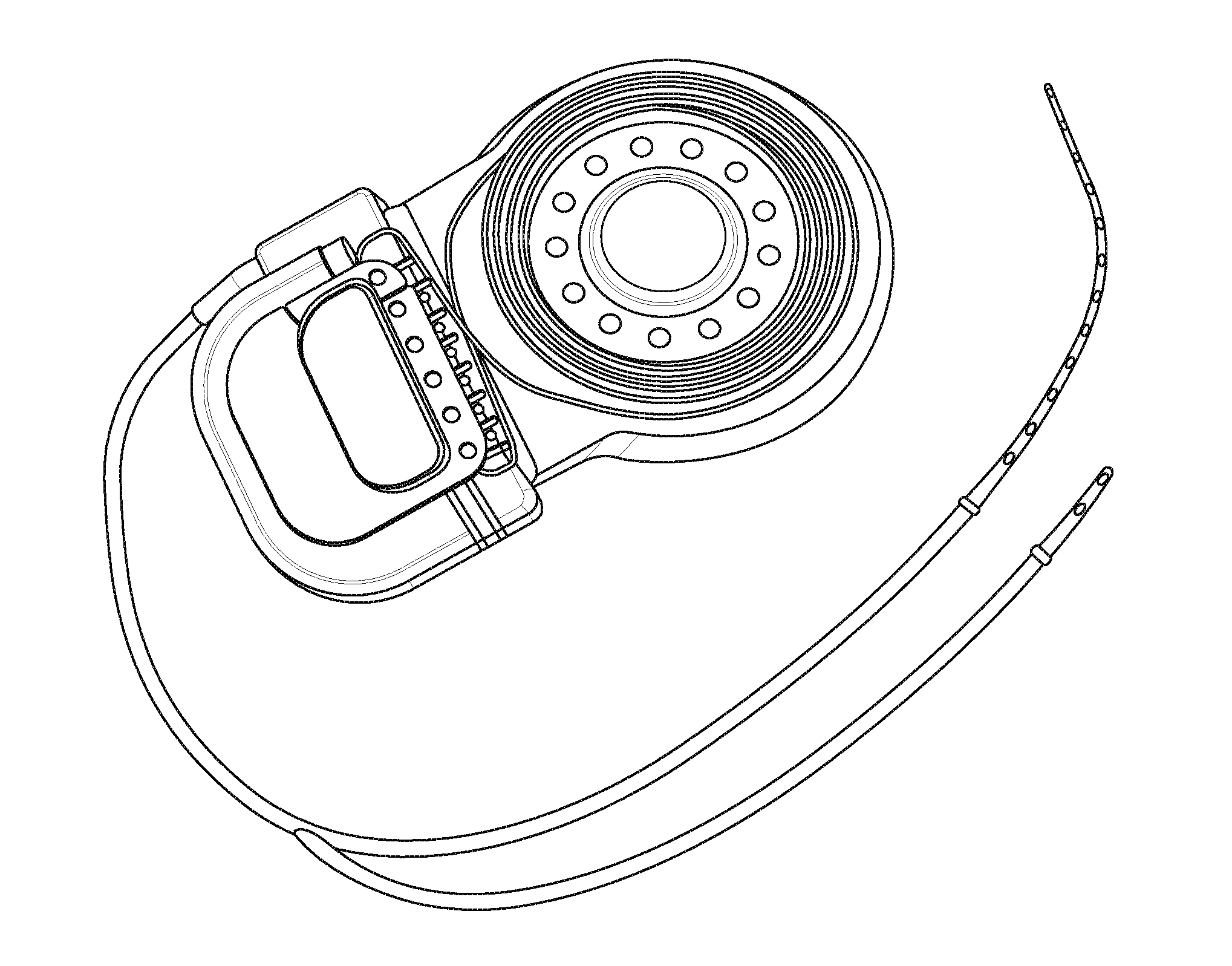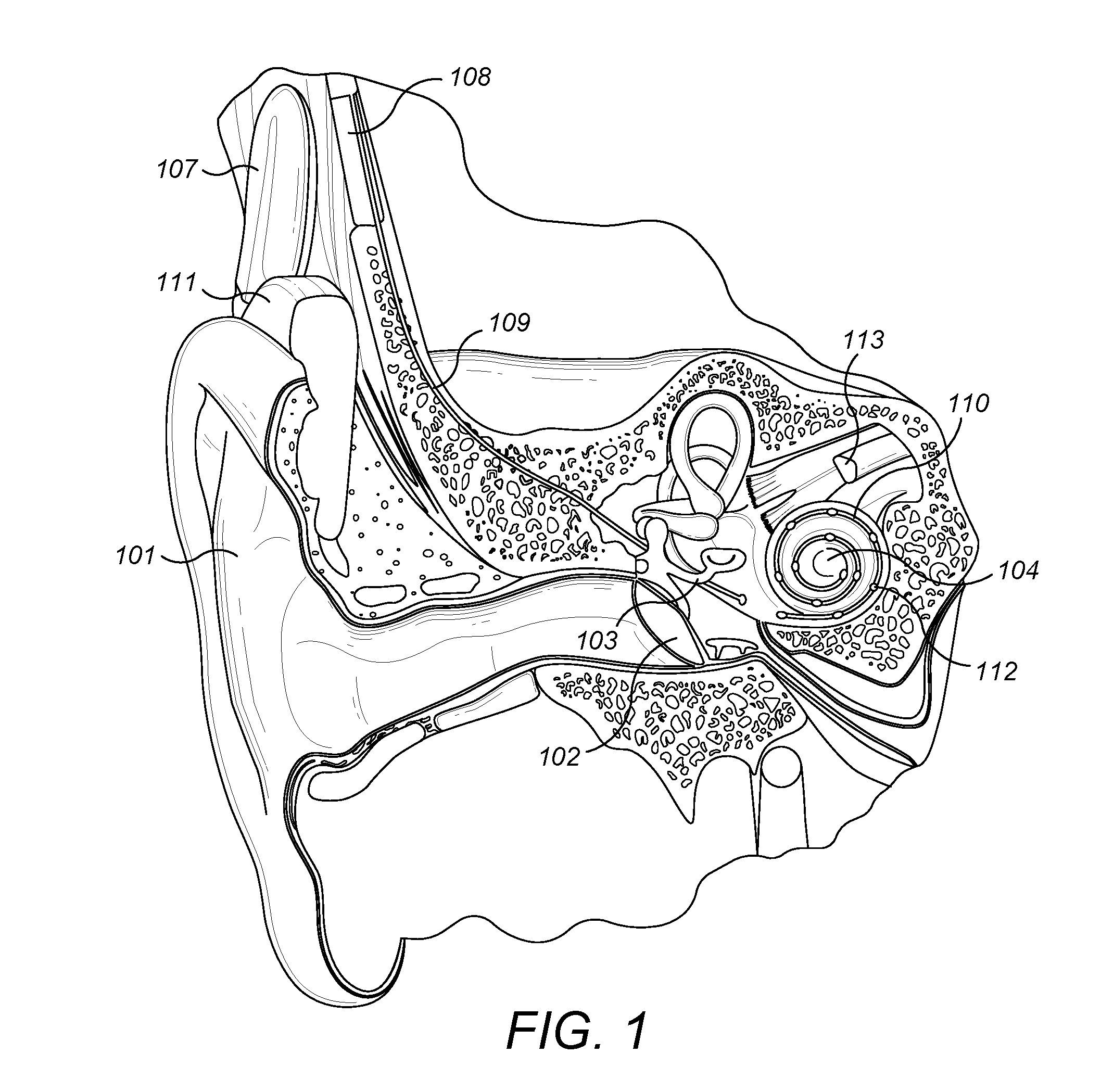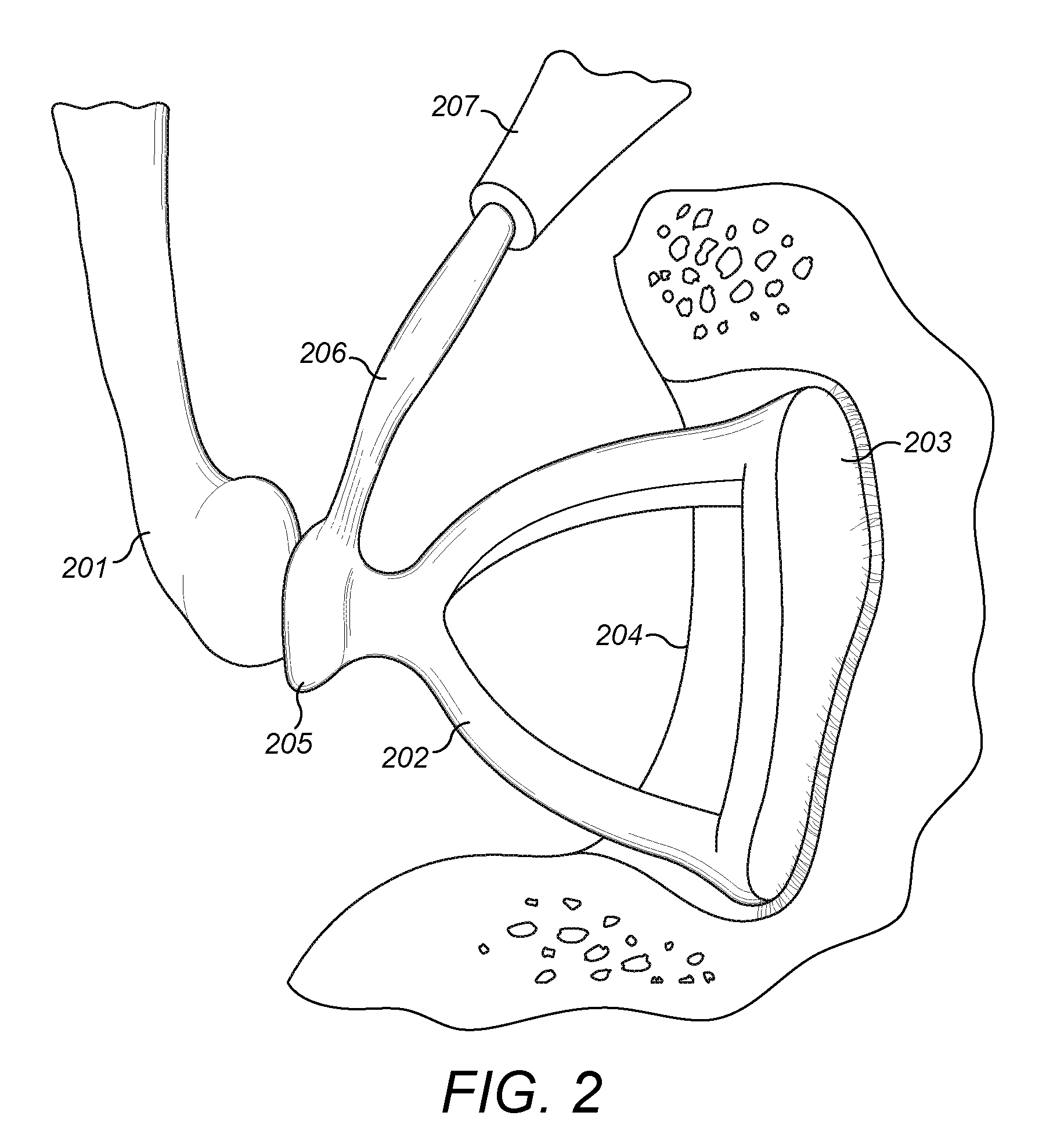Novel Recording Approach of Stapedius Muscle Activity
a stapedius muscle and activity technology, applied in the field of hearing prosthesis systems, can solve the problems of insufficient contact of the stapedius muscle tissue, difficult surgical positioning into the desired position, and difficult reliable minimally-invasive contact of the stapedius muscle, and achieve the effect of confirming the proper continuing functioning of the facial nerv
- Summary
- Abstract
- Description
- Claims
- Application Information
AI Technical Summary
Benefits of technology
Problems solved by technology
Method used
Image
Examples
Embodiment Construction
[0028]Embodiments of the present invention are directed to methods for inserting a stapedius activity sensor to engage the stapedius muscle from the opposite end to what is conventionally done. FIG. 3 shows the anatomy of the stapedius muscle relative to the facial nerve 301 and the stapes 304. The novel activity sensor is configured to connect to the stapedius muscle belly end 302 near where the facial nerve 301 innervates the stapedius muscle rather than at the tendon end 303 where the stapedius tendon emerges from the pyramidal eminence 305 and connects to the stapes 304. In some patients, the structure of the stapedius muscle, where the facial nerve innervates the stapedius muscle, may not look like a “belly” as such, however, throughout this application, this end is denoted as muscle belly or stapedius muscle belly.
[0029]This new approach requires additional surgical drilling, but reaching the belly end 302 of the stapedius muscle will result in a faster, more secure and long t...
PUM
 Login to View More
Login to View More Abstract
Description
Claims
Application Information
 Login to View More
Login to View More - R&D
- Intellectual Property
- Life Sciences
- Materials
- Tech Scout
- Unparalleled Data Quality
- Higher Quality Content
- 60% Fewer Hallucinations
Browse by: Latest US Patents, China's latest patents, Technical Efficacy Thesaurus, Application Domain, Technology Topic, Popular Technical Reports.
© 2025 PatSnap. All rights reserved.Legal|Privacy policy|Modern Slavery Act Transparency Statement|Sitemap|About US| Contact US: help@patsnap.com



